Hormones and the Menstrual Cycle in Developmental Zoology
1/51
There's no tags or description
Looks like no tags are added yet.
Name | Mastery | Learn | Test | Matching | Spaced |
|---|
No study sessions yet.
52 Terms
Hormones
Chemicals coordinating reproductive changes in body.
Menstrual Cycle
Approximately 28-day cycle of uterine changes.

Menstruation
Flow of shed uterine tissue from vagina.
GnRH
Hormone stimulating FSH and LH secretion.
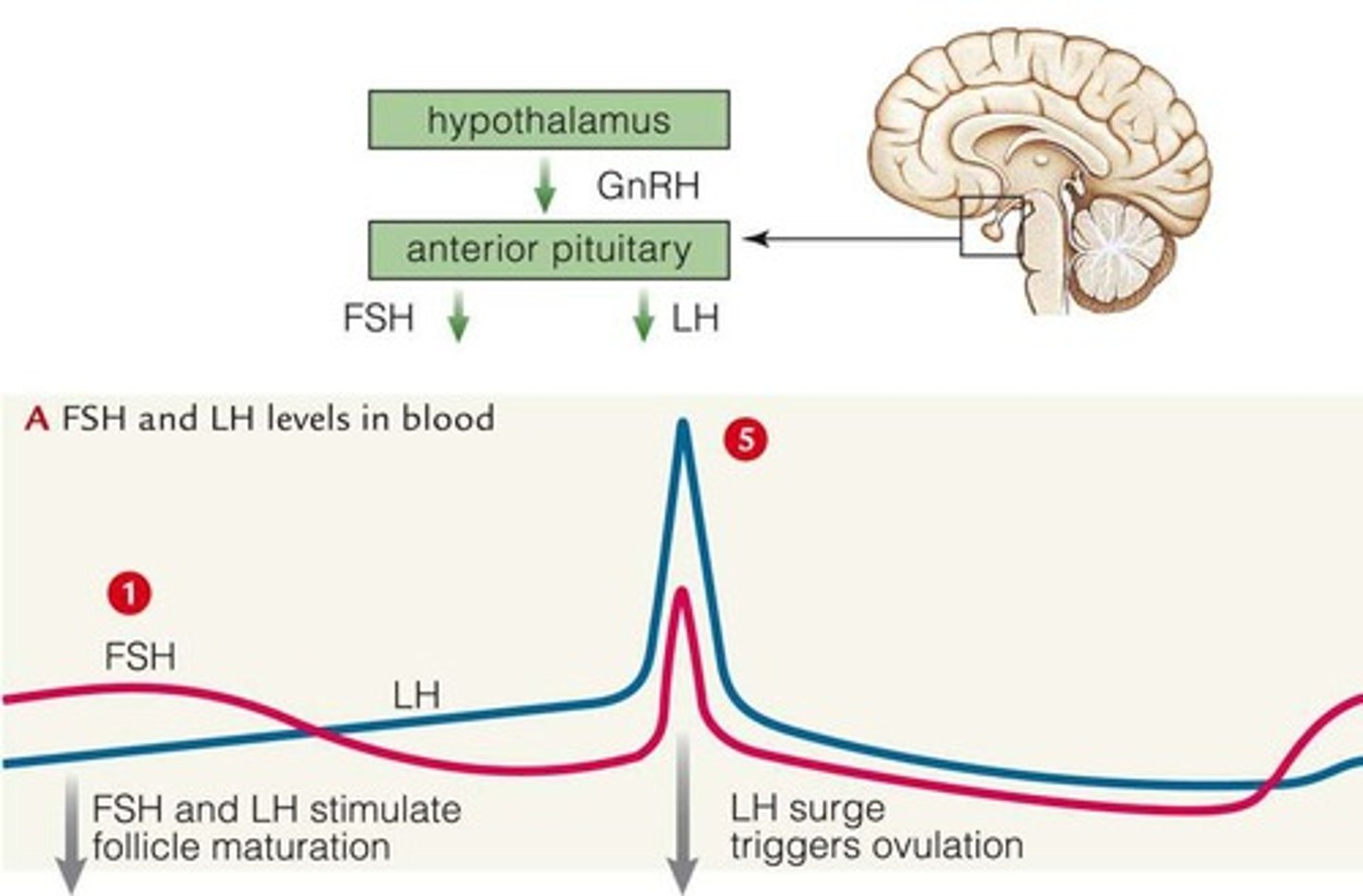
FSH
Follicle-stimulating hormone promoting follicle maturation.
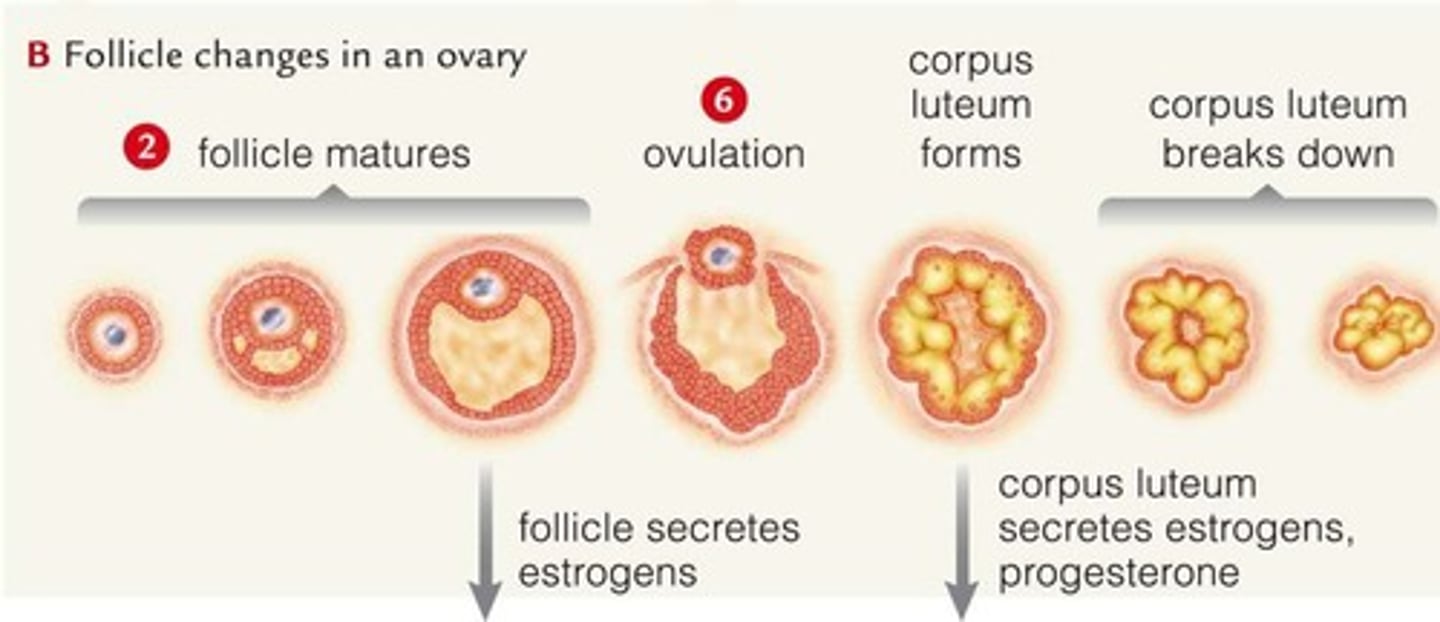
LH
Luteinizing hormone triggering ovulation.
Follicular Phase
Interval of follicle maturation before ovulation.
Estrogens
Hormones promoting endometrial thickening.
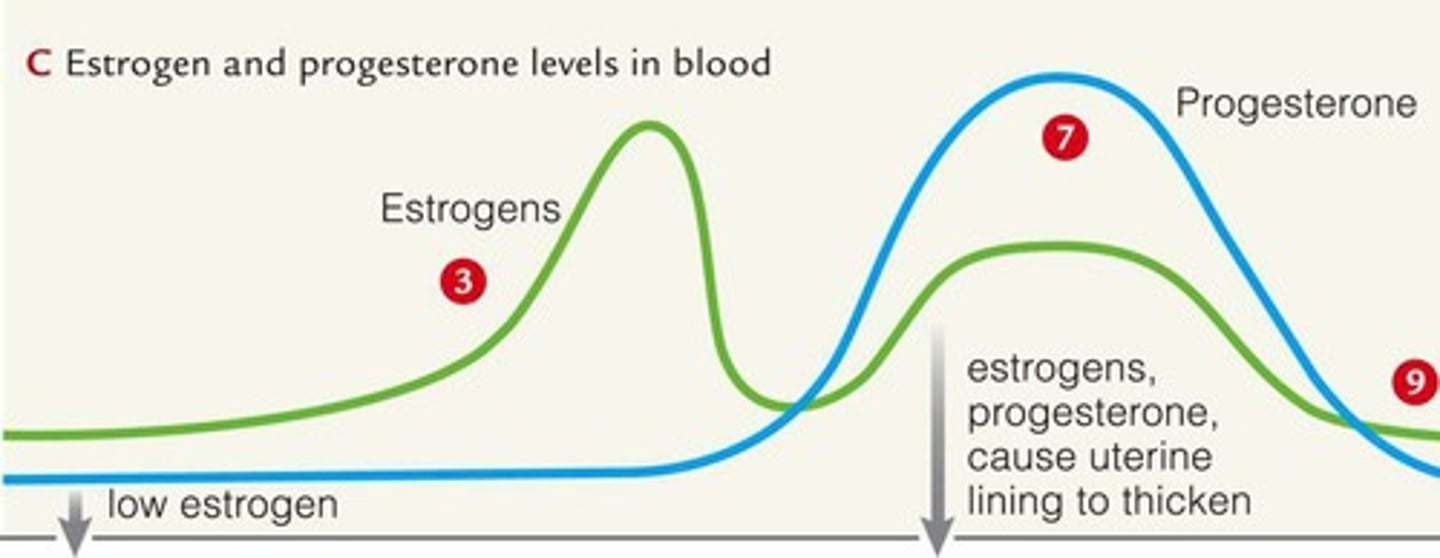
Corpus Luteum
Structure secreting progesterone post-ovulation.
Luteal Phase
Phase following ovulation with corpus luteum activity.
Progesterone
Hormone maintaining uterine lining for pregnancy.
Endometrium
Uterine lining thickening for potential implantation.
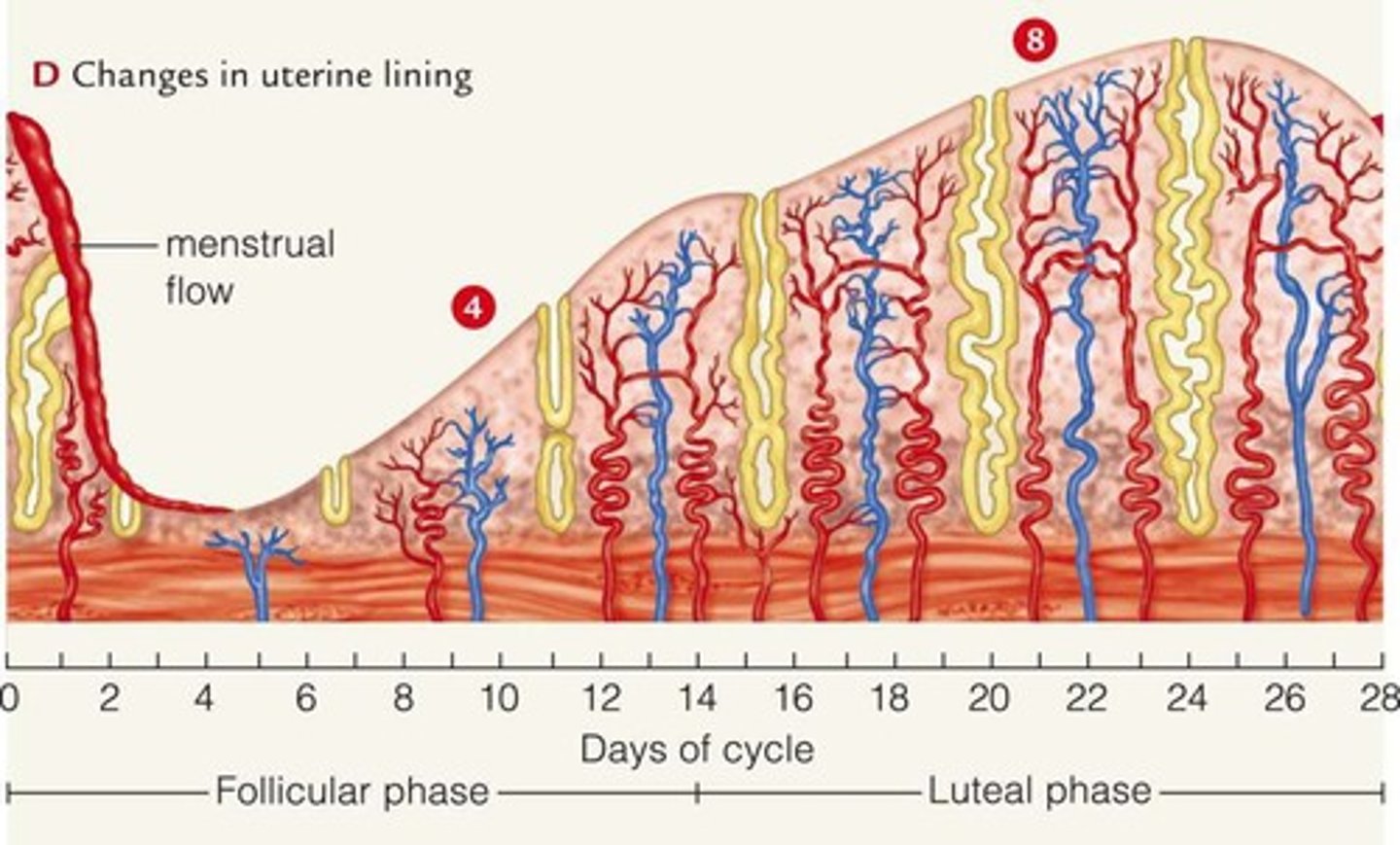
PMS
Premenstrual syndrome causing physical and emotional symptoms.
Aldosterone
Hormone increasing sodium reabsorption before menstruation.
Prostaglandins
Compounds stimulating uterine contractions during menstruation.
Endometriosis
Condition of misplaced endometrial tissue causing pain.
Menopause
Permanent cessation of menstrual cycles.
Secondary Sexual Traits
Physical characteristics developed during puberty.
Ejaculation
Release of semen containing sperm during orgasm.
Oviduct
Site of fertilization between sperm and egg.
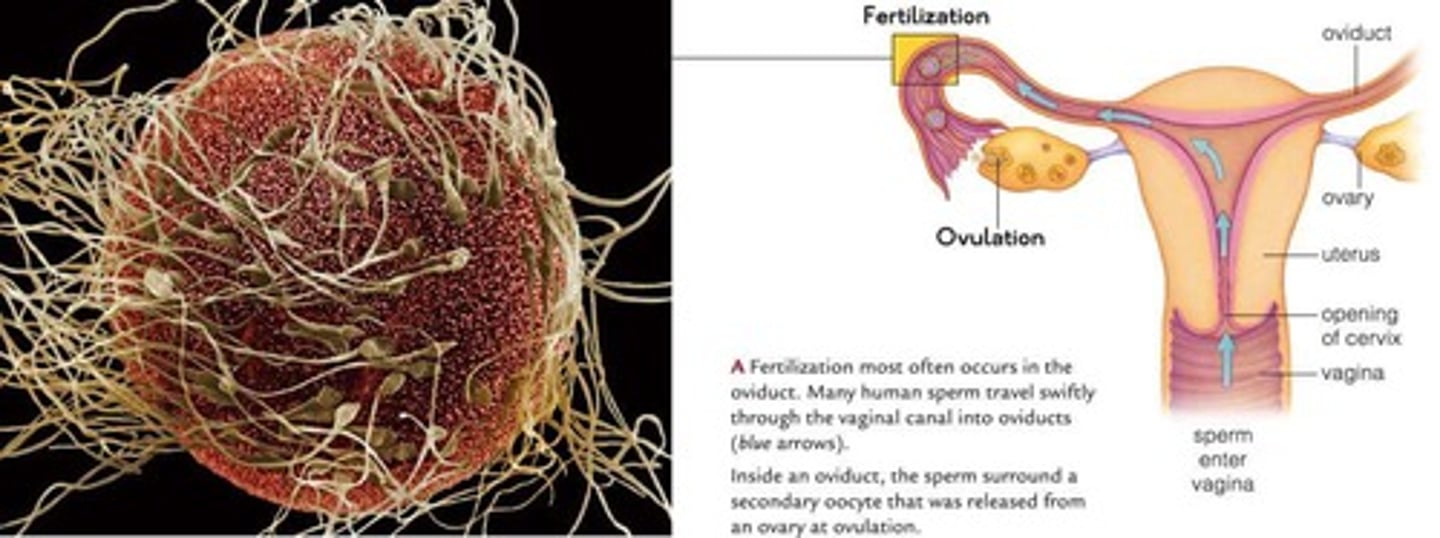
Fertilization
Union of sperm and secondary oocyte.
Jelly Coat
Layer surrounding secondary oocyte aiding fertilization.
Meiosis II
Second meiotic division producing mature ovum.
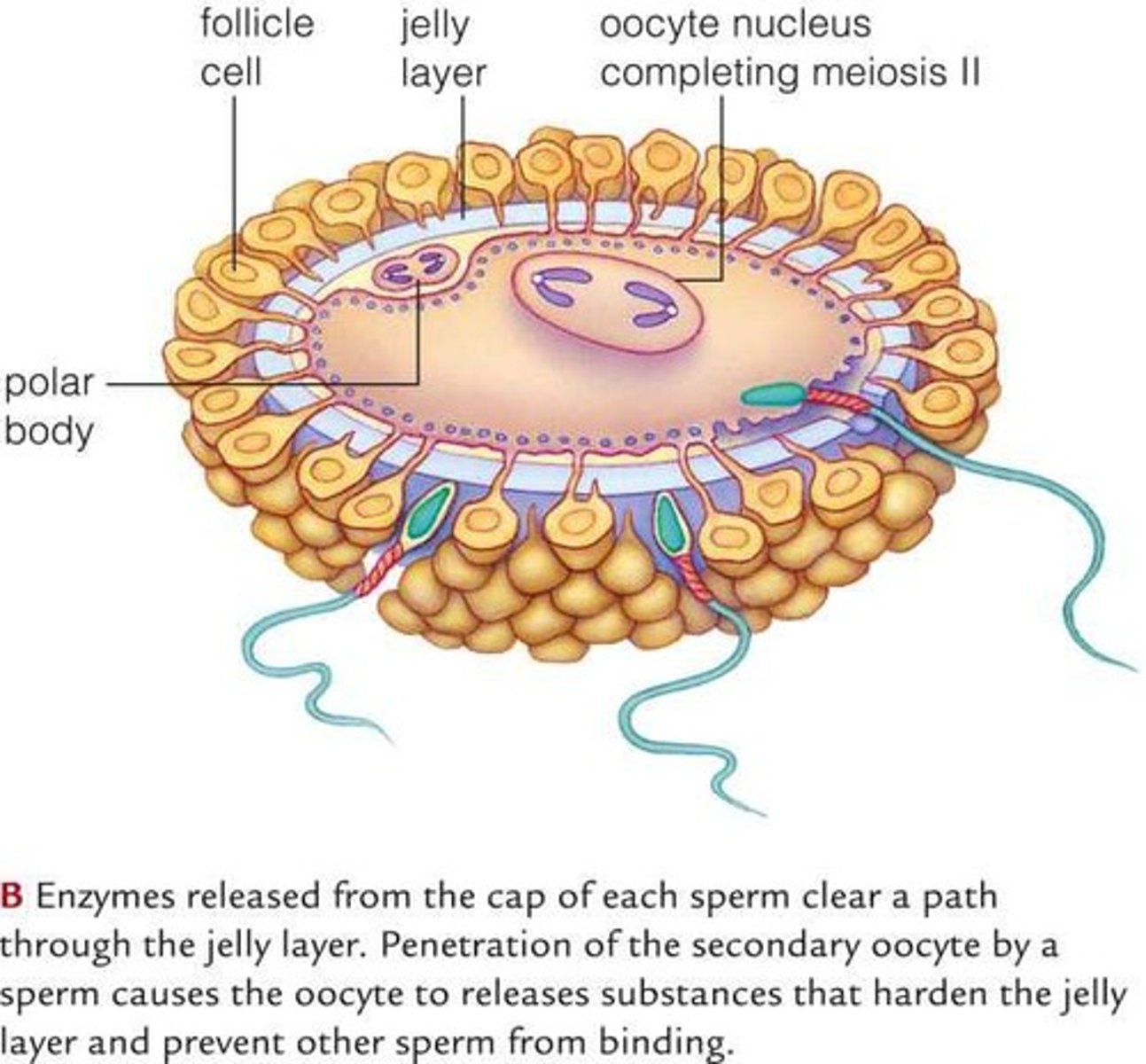
Zygote
Fertilized egg forming from sperm and egg nuclei.
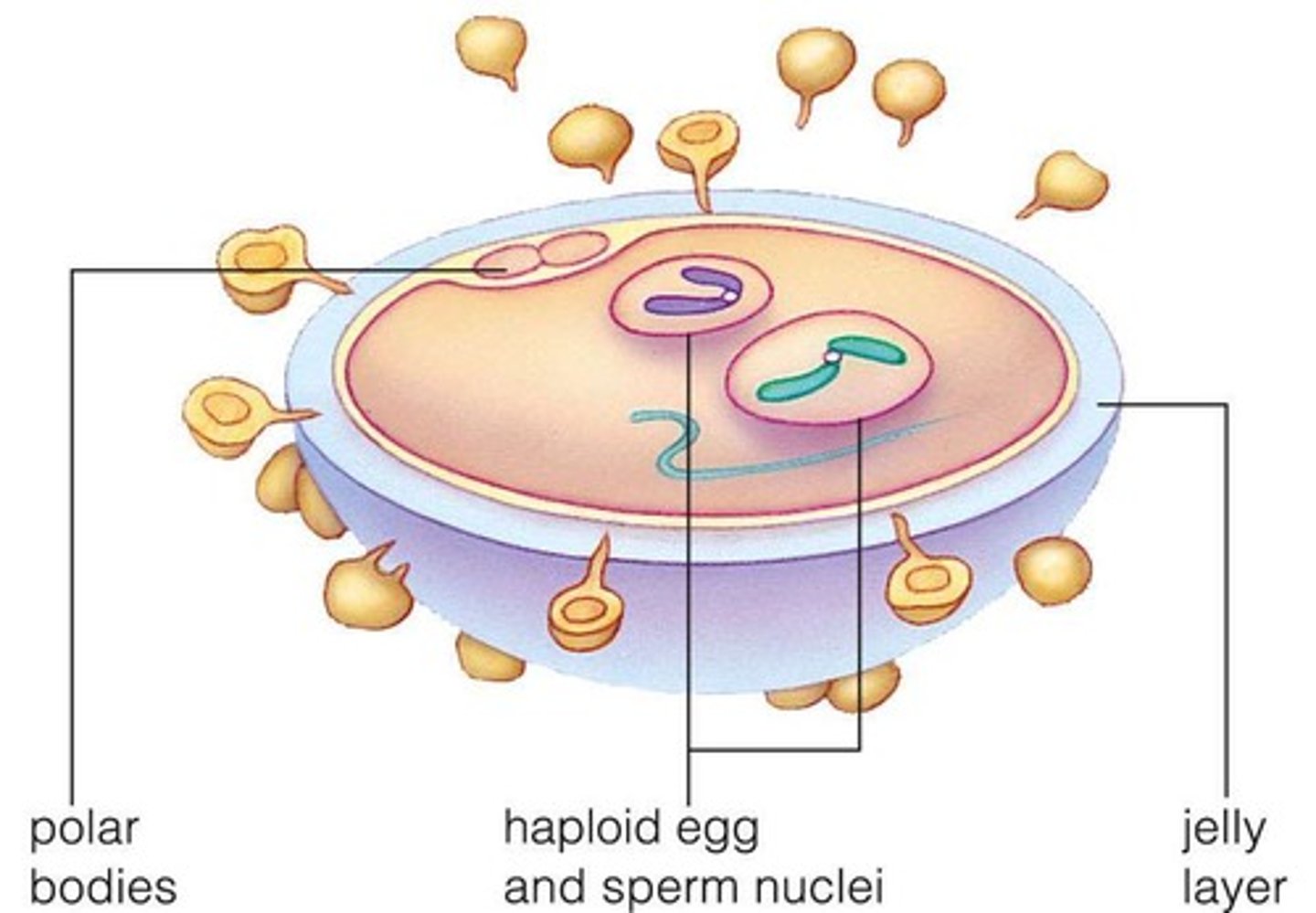
Contraception
Methods preventing pregnancy during sexual intercourse.

STDs
Infections transmitted through sexual contact.
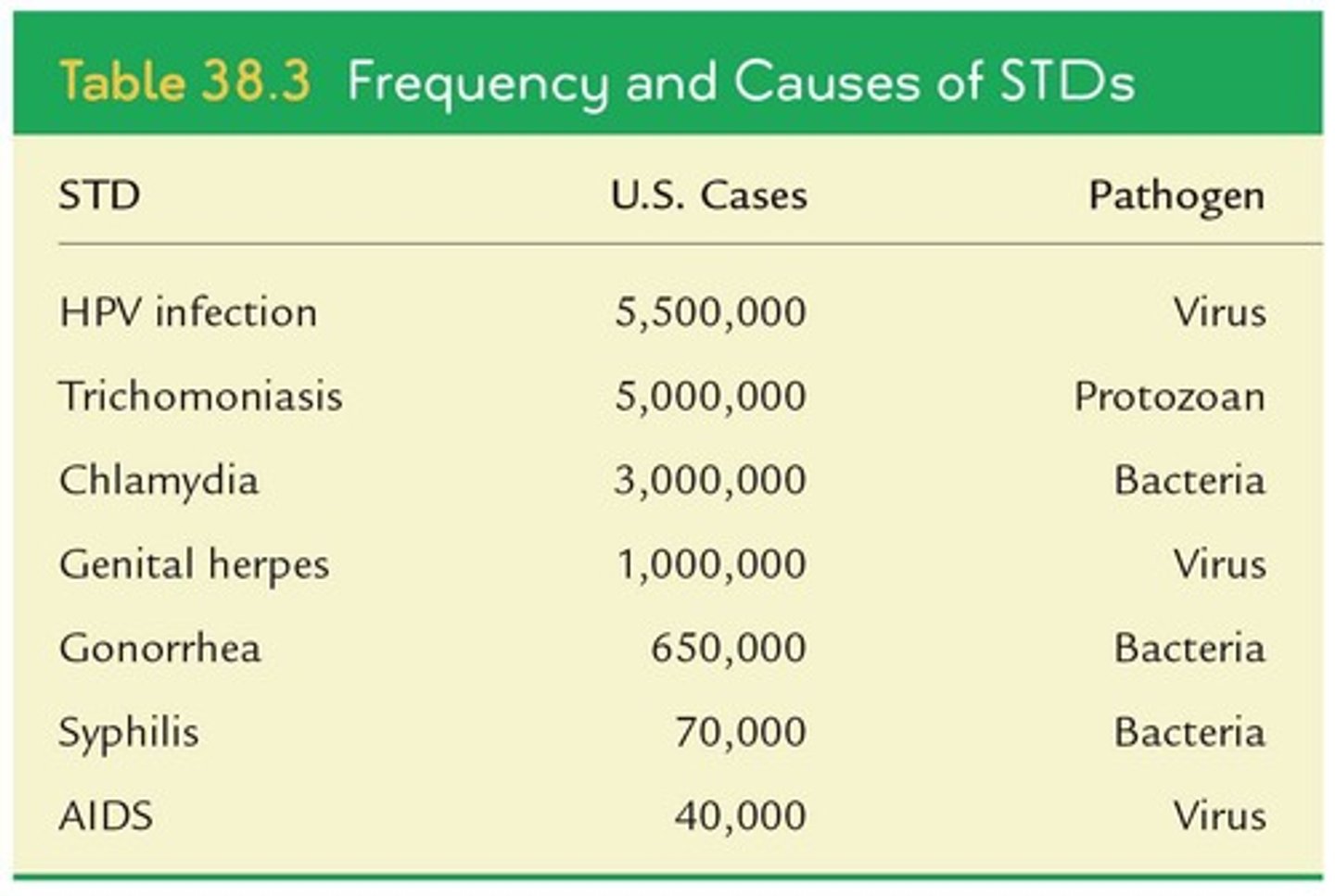
Chlamydia
Common bacterial STD often asymptomatic in women.
Gonorrhea
Bacterial STD infecting oviducts, causing complications.
Syphilis
Bacterial infection damaging organs if untreated.
HPV
Virus causing genital warts and cervical cancer.
Pap Smear
Test screening for cervical cancer in women.
Gardasil
Vaccine preventing certain HPV infections.
HIV
Virus leading to AIDS, affecting immune system.
Sexual Intercourse
Act bringing sperm and egg together for fertilization.
Sympathetic Stimulation
Nervous system response during sexual arousal.
Oxytocin
Hormone promoting bonding and reducing anxiety.
Endorphins
Chemicals released during orgasm enhancing pleasure.
Sperm Lifespan
Sperm can live for about three days.
Follicle Cells
Cells surrounding oocyte, aiding in fertilization.
Cervical Mucus
Fluid secreted during sexual arousal aiding sperm.
Erectile Function
Ability to achieve erection, affected by various factors.
Tubal Ligation
Permanent surgical method preventing pregnancy.
Vasectomy
Surgical procedure preventing sperm release during ejaculation.
Benign Tumors
Non-cancerous growths in the uterus causing pain.
Menstrual Pain
Discomfort caused by uterine contractions during menstruation.
Hormonal Changes
Alterations in hormone levels affecting menstrual cycle.
Sodium Reabsorption
Process increased by aldosterone before menstruation.
Cramps
Painful contractions of the uterus during menstruation.
Sexual Excitement
Physiological response leading to lubrication and readiness.
Fertilization Process
Steps leading to the union of sperm and egg.
Sperm Binding
Process where sperm attaches to egg proteins.
Nuclear Fusion
Fusion of sperm and egg nuclei forming zygote.